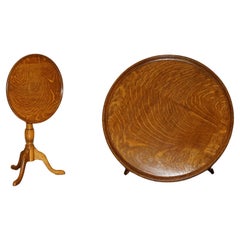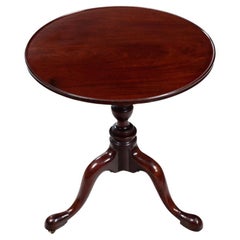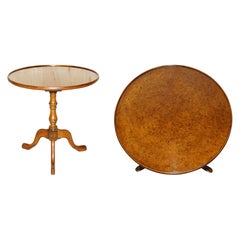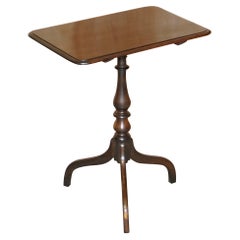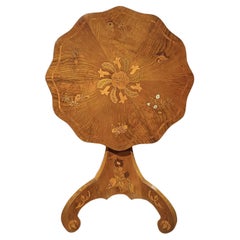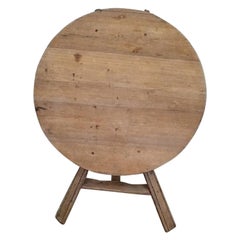Dessert Tables and Tilt-top Tables
1840s English Early Victorian Antique Dessert Tables and Tilt-top Tables
Oak
19th Century Irish Georgian Antique Dessert Tables and Tilt-top Tables
Mahogany
19th Century English Victorian Antique Dessert Tables and Tilt-top Tables
Oak
1840s English Early Victorian Antique Dessert Tables and Tilt-top Tables
Hardwood
Early 19th Century Italian Charles X Antique Dessert Tables and Tilt-top Tables
Fruitwood, Walnut
20th Century French Dessert Tables and Tilt-top Tables
Iron
19th Century English Antique Dessert Tables and Tilt-top Tables
Mahogany
18th Century English Neoclassical Antique Dessert Tables and Tilt-top Tables
Wood, Mahogany
Early 19th Century Unknown Louis XVI Antique Dessert Tables and Tilt-top Tables
Mahogany
1820s English George IV Antique Dessert Tables and Tilt-top Tables
Ebony, Mahogany
1950s Italian Mid-Century Modern Vintage Dessert Tables and Tilt-top Tables
Glass, Wood
Late 19th Century English Antique Dessert Tables and Tilt-top Tables
Mahogany
1880s English Victorian Antique Dessert Tables and Tilt-top Tables
Walnut
1830s English William IV Antique Dessert Tables and Tilt-top Tables
Hardwood
19th Century French Victorian Antique Dessert Tables and Tilt-top Tables
Mother-of-Pearl, Wood
20th Century European Regency Dessert Tables and Tilt-top Tables
Brass
19th Century English Victorian Antique Dessert Tables and Tilt-top Tables
Hardwood
18th Century and Earlier Italian Antique Dessert Tables and Tilt-top Tables
Giltwood
1950s European Mid-Century Modern Vintage Dessert Tables and Tilt-top Tables
Rosewood
19th Century French Directoire Antique Dessert Tables and Tilt-top Tables
Marble
19th Century French Antique Dessert Tables and Tilt-top Tables
Bronze
Mid-20th Century Scandinavian Mid-Century Modern Dessert Tables and Tilt-top Tables
Wood
19th Century French Louis XVI Antique Dessert Tables and Tilt-top Tables
Carrara Marble, Ormolu
Early 20th Century French Dessert Tables and Tilt-top Tables
Bronze
19th Century English Regency Antique Dessert Tables and Tilt-top Tables
Brass
Mid-20th Century Mid-Century Modern Dessert Tables and Tilt-top Tables
Rosewood
Antique and Vintage Dessert Tables and Tilt-Top Tables
In preparing for your next holiday party or dinner party, an antique or vintage dessert table might just be the perfect finishing touch.
Dessert tables are elegant pieces essential for hosting both formal and casual gatherings. Also known as tilt-top tables or loo tables (named for the card game), these eye-catching furnishings make it easy to host large parties so that guests are not confined to a single space for the night. The top of a tilt-top table is typically hinged to a pedestal in the structure’s center so that its surface can be turned from a horizontal to a vertical position and parked in the corner of a living room or dining room. This gives it an advantage over a traditional side table and allows it to take up less space when it’s not in use.
Dessert tables are deliberately built small or narrow so that they are easy to maneuver. These compact tables were especially prominent in the 18th century in the United States and England where they regularly accompanied social interactions like tea drinking. During the early 1920s, the sterling-silver full tea service and tray designed by Tiffany & Co. set atop your dessert table might include a hot-water kettle on a stand, a coffeepot, a teapot, a creamer with a small lip spout, a waste bowl and a bowl for sugar, which the British were stirring into tea by the 1720s and ’30s.
Older dessert tables often feature intricate carvings and motifs, making them enduringly popular through the decades. Many tilt-top tables likewise have elaborate veneers for a decoration that can be viewed when they are tilted down and stored against a wall.
Find antique and vintage tilt-top tables and dessert tables in various styles and finishes on 1stDibs.
